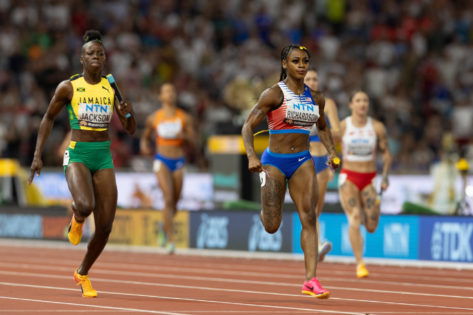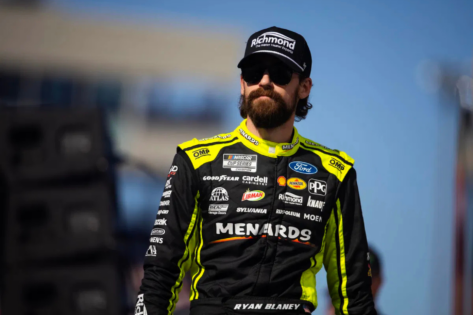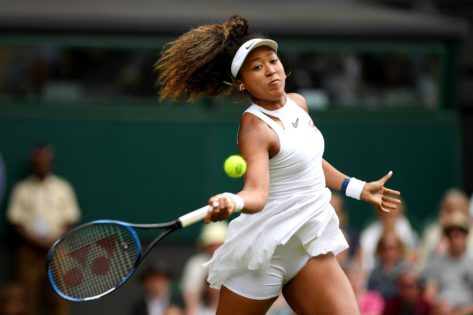If you told a NASCAR fan from the 1950s, 60s, or even the 70s that they could watch their favorite drivers tear around Darlington or Daytona with a couple of clicks, or heck, just by talking to their TV, they’d probably laugh you straight into the infield. And rightly so. You see, back then, watching the sport meant rabbit ears, grainy broadcasts. And maybe (if you were lucky), a couple of races aired nationally.
Fast forward to 2025, and NASCAR has gone full throttle into the future. Their debut on Amazon Prime wasn’t just a streaming experiment. Rather, it was a calculated leap designed to reach new fans without forgetting the old ones. But what made this transition work? According to insiders, it wasn’t just the high-tech platforms or sleek camera work. It was nostalgia. Specifically, a certain mustachioed legend named Dale Earnhardt Sr. helped drive the whole thing home.
Dale Earnhardt Sr. powers Amazon Prime’s NASCAR revolution
When NASCAR signed its latest media rights deal, it made one thing clear. Streaming is no longer a sideshow. The $7.7 billion, seven-year broadcast agreement starting in 2025 features longtime partners FOX and NBC, but also boldly brings in Amazon Prime Video and Warner Bros. Discovery’s TNT Sports to handle midseason Cup Series races.
Amazon’s portion includes exclusive rights to five races, and more importantly, a stake in NASCAR’s future fan base. And according to Brian Herbst, EVP, Chief Media & Revenue Officer at NASCAR, Amazon isn’t just broadcasting races, it’s building bridges. “I think one way Amazon did a really good job cultivating that fan base is they told stories from the past,” Herbst said.
Well, Herbst was referencing Earnhardt, the definitive Dale Sr. documentary that launched the day before the Coca-Cola 600. Unlike previous tributes, Earnhardt dives deep into the personal and professional life of The Intimidator, offering never-before-seen footage and candid insights from friends, rivals, and family. It’s raw, emotionally resonant, and expertly crafted.
Herbst didn’t hold back in his praise, calling it “one of the best pieces of NASCAR content that I’ve ever seen.” He’s not alone. The docuseries shot up Amazon’s trending charts, reaching the top two spots for two straight weeks and earning accolades from longtime fans and curious newcomers alike. Its IMDB (8.8/10) and Prime Video (9.1/10) ratings are enough to show its acceptance among fans.
Moreover, analysts have hailed its balance of history and heart, while even casual viewers were pulled in by the legacy of a man who defined an era. “So, there’s tip-of-the-hat nostalgia for the sport while also telling the stories of the future,” Herbst added. “It’s kind of growing the next generation of fans.” And it’s a win-win for all. Amazon gets deeper into live sports. NASCAR reaches younger audiences, raising its value for advertisers. As Herbst put it, “The more younger viewers that you draw, the more your value for advertisers.”
And the audience, well, they get to experience the soul of NASCAR – its past, present, and future – all from the comfort of their couch.
Prime Video’s NASCAR coverage in numbers
As Amazon Prime Video’s five-race NASCAR coverage came to an end at Pocono, it has surely helped attract the younger demographic to the sport. “Certainly, a younger demographic is an exciting thing. But it’s not our only goal. Our goal is to serve the entire fan base,” Alex Strand, Senior Coordinating Producer at Prime Video, said. But has Amazon achieved what it set out to do? Well, let’s check the numbers ’cause they definitely don’t lie.
Firstly, Amazon’s NASCAR experiment did not immediately match the total audience numbers of traditional networks. It averaged 2.16 million viewers per race compared to last year’s similar slate, which drew closer to 2.6 million on linear TV. But the platform succeeded in attracting a much younger demographic, as stated earlier.
Prime Video’s NASCAR races boasted a median viewer age of 56.1. This is nearly seven years younger than the average for Cup Series races on FOX and FS1 this season (which sits at 62.8). Notably, the 18–34 age group saw a 36% increase in viewership, averaging 233,000 viewers per race, a figure that underscores Amazon’s ability to reach new fans.
Amazon also leveraged its streaming strengths to offer innovative features such as uninterrupted green-flag racing, advanced analytics, and in-depth post-race shows. The NASCAR Live from Victory Lane post-race program retained an impressive 43% of the race audience. Even Dale Jr., associated with Amazon as a commentator, revealed, “I see a ton of fans on our social media begging for more post-race.”
Despite these successes, there is still work to do in boosting overall viewership and fully closing the gap with traditional broadcasts. The transition to streaming, while promising, is not without its challenges. For instance, there was a 22% drop in viewers at Pocono compared to last year’s USA Network telecast. However, the combination of compelling storytelling with Dale Sr. documentary, technological innovation, and a focus on younger audiences positions Prime Video as a key player in NASCAR’s evolving media landscape.
The post NASCAR Exec Credits Dale Earnhardt’s Legacy Behind Amazon Prime’s Successful Broadcast Debut appeared first on EssentiallySports.



